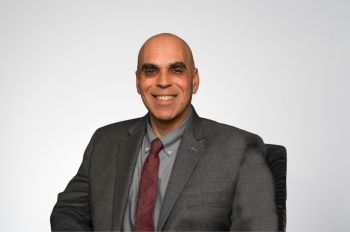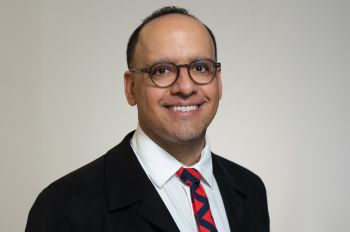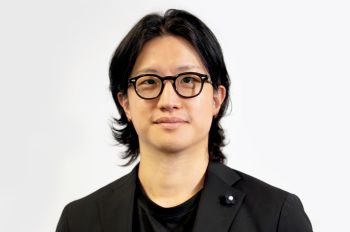Undergraduate Students Awarded Summer 2016 Armour R&D Fellowships
Twelve Armour College of Engineering undergraduate students and their faculty mentors have been awarded Summer 2016 Armour R&D Fellowships. The program, an Armour College of Engineering Distinctive Education initiative, offers undergraduate engineering students the opportunity to gain hands-on research and development experience in the lab of a faculty mentor.
Eight students funded during the summer term will begin projects for the first time, while four participants will continue research started during prior semesters. Students have been selected to participate in the program based on the quality of project proposals submitted. The proposals are reviewed and selected by Natacha DePaola, Carol and Ed Kaplan Armour College Dean of Engineering, and the Distinctive Education Council.
Armour R&D will run for ten weeks, culminating with the Summer 2016 Armour R&D Expo to be held in late August 2016. The students will also present their work at the 3rd Annual Armour R&D Expo to be held at the end of the Spring 2017 semester. During these Expos, students will participate in a poster competition where they share the results of their work and compete for awards.
The Summer 2016 Armour R&D projects are categorized under the four IIT Engineering Themes: Water, Health, Energy, and Security. These themes represent areas in which engineers can create solutions of global impact that advance society.
Health
Vasundhara Agrawal (BME, 3rd year) and Assistant Professor of Biomedical Engineering, Kenneth Tichauer, will continue work on their project Solutions to Mathematical Models Governing Diffusion of Imaging Agents in Healthy and Cancerous Breast Tissue to Study Their Effect on Quantitative Accuracy in Lumpectomy Margin Assessment. Dr. Tichauer’s research team is working to develop a wide area surface-imaging device for quantitative molecular phenotyping of various cell-surface tumor biomarkers in order to detect residual tumors during a lumpectomy. This device will help doctors ensure that they have removed all remnants of a cancerous tumor during surgery, hopefully preventing future operations and the spread of the tumor. Agrawal will continue her work to advance equations that govern the diffusion of imaging agents in healthy and cancerous breast tissue. Last semester, the team discovered that the phenomenon of receptor saturation affects the calculation of overall cell receptor density making this model essential for figuring out the optimum dosage of imaging agent or nanoparticles that needs to be administered into the tissue for best localization of cancer in the sample. Agrawal earned the Spring 2016 High Score Award at the 2nd Annual Armour R&D Expo this past April for her previous work on the project.
Morgan Kretlow (BME, 3rd year) and Assistant Professor of Biomedical Engineering, Abhinav Bhushan, will begin work on their project Effects of Extracellular Matrix Membrane on Liver Tissue in a Microphysiological System. Microphysiological systems, or organs on chips, have been a growing area of study for researchers attempting to study the metabolic and inflammatory diseases of the liver. This technology can only model the liver’s function if the structure of the cells replicates a human livers tissue. In previous work, a synthetic polymer was used to separate the four layers of cells in the device. This membrane provided the necessary structure, but did not allow for cellular movement after the cells are established. Kretlow will work to develop a resorbable membrane made out or type I collagen that allows cells to migrate through the matrix as a close approximation to the physiology of the liver tissue. The team also aims to lower the gap between the layers of cells on either side of the membrane. Currently this gap is 10-100 microns on the chip, while in a human liver this gap is closer to 1 micron.
Wesley Lo (BME, 3rd year) and Associate Professor of Biomedical Engineering, Georgia Papavasiliou, will begin work on their project Biomedical Engineering Cell and Tissue. This project will be a new phase of an award winning project the team started during the Fall 2015 Armour R&D program. Coronary artery disease, stroke and peripheral artery disease (PAD) can cause reduced blood flow in the body's lower extremities and can increase the risk of limb amputation or death. Surgery is not always an option for patients with advanced forms of the disease and noninvasive treatments are needed. Recently dual delivery of pro-angiogenic and vessel stabilizing peptides have been shown to promote neovascularization for ischemic tissue repair. The team will work to determine the most efficient strategy to deliver the angiopoetin-1 peptide mimetic tetrameric construct (VT) within a biomimetic hydrogel. Their work will provide insight on how therapeutic vessel stabilizing peptides can be delivered to treat PAD and its complications. Lo was named the recipient of the Fall 2015 High Score and Overall High Score awards at the 2nd Annual Armour R&D Expo, the Top Presenter from Illinois Tech at the Chicago Area Undergraduate Research Symposium (CAURS), and the Undergraduate Winner at IIT Research Day for his previous work on the project.
Zacharie Maloney (BME, 2nd year) and Professor of Chemical Engineering and Director of the Engineering Center for Diabetes Research and Education, Ali Cinar, will begin work on their project Development of a Closed-Loop System for Artificial Pancreas Control. Current artificial pancreas (AP) devices rely on manual or open loop control, requiring significant patient involvement. The Process System Modeling, Supervision, and Control Research Group is currently developing an entirely closed-loop system for AP control. This innovative closed-loop system predicts the patient's needs by continually monitoring a number of physiological data points to maintain blood glucose levels with minimal to no active intervention by the patient. The current device is in late stages of development and runs on a laptop. Maloney will work to develop the AP control code in Java so it can be used with a small Android smartphone. This project could lead to an AP device that requires no patient involvement to monitor and regulate glucose levels in their blood.
Vesna Naumovski (BME/ChE, 4th year) and Assistant Professor, Seok Hoon Hong, will begin work on their project Formulation of Pyocin Bacteriocin through Cell-Free Protein Synthesis. The extensive use of antibiotics has led to a rise in multidrug-resistant (MDR) bacteria; increasing the difficulty of treating many infectious diseases. A new method to treat bacterial diseases is needed. The team will research the effectiveness of using bacteriocins, antimicrobial peptides produced by bacteria that are toxic to other types of bacteria. They will focus on synthesizing pyocin by lysing and centrifuging cells to acquire the cell machinery (ribosomes, nucleases, translation initiation, etc.). Plasmid expression templates will then be formed using Polymerase Chain Reaction (PCR) to copy and replicate the DNA with the required genes. This will then activate the cell-free protein synthesis (CFPS) reaction, forming pyocin.
Woojin Pang (BME, 2nd year) and Professor of Biomedical Engineering, Eric Brey, will begin work on their project Effect of Prevascularized Fibrin Scaffolds on Bone Defect Healing In Vivo. Dr Brey’s lab has been working towards engineering large volume vascularized bone grafts. The ability of the graft to form blood vessels, inducing blood flow to the tissue, is critical to the success of the procedure. Creating a tissue scaffold by co-culturing mesenchymal stem cells (MSCs, which differentiate into bone) and human umbilical vein endothelial cells (HUVECs, which form vascular networks) in fibrin gels has proven to be successful in promoting bone growth. Pang will be examining the stability of these vascular networks, their effect on the healing of bone defects, and early bone formation after they have been implanted into animal subjects. This research will expand the understanding of bone graft vascularization and advance the field of tissue engineering.
Omar Sharif Tawakol (BME, 2nd year) and Associate Dean of Armour College of Engineering and Professor of Biomedical Engineering, Philip Troyk, will continue work on the MIND project Development of a Neural Electrode Implantation Device for In-Vivo Surgical Use. During the Spring 2016 Armour R&D Program, Tawakol worked to refine the design for a tool used to insert wireless electrode arrays into neural tissue. The electrodes inserted by the device will connect to a intracortical visual prosthesis (IVCP) being developed by Dr. Troyk’s research group. The tool developed during the spring was used to implant two array devices in the cortices of two non-human primates and was then tested on a human cadaver to implant 9 devices. This summer, the team will focus on modifying the design after receiving feedback from surgeons who tested the tool. They will focus on designing a 3-axis surgical manipulator to hold the tool and reducing the size of the device by minimizing electronics and refining the design of certain parts. These modifications will ensure the device can implant electrodes as close to each other as possible while maximizing visibility at the tip of the tool.
Dawid Walus (BME, 3rd year) and Associate Professor of Electrical and Computer Engineering and Biomedical Engineering, Jovan Brankov, will begin work on their project 3D Image Reconstruction in the Advancement of Agent-Dependent Early-Photon Tomography (ADEPT). A team of researchers at Armour’s Medical Imaging Research Center (MIRC) is currently working to optimize an imaging system which is focused on agent- dependent early-photon tomography (ADEPT). The system’s objective is to utilize early photon fluorescence projection tomography in order to develop a three-dimensional map of a sample of biological tissue, ultimately allowing for the imaging of tumor heterogeneity. By using visual light photons instead of ionizing radiation, the system promises to be less harmful to potential patients. Walus will be focused on utilizing the early set of photons released by the system and the already known optical properties of the tested tissues to reproduce the 3D images of the tumor induced tissues. This research will provide the opportunity to analyze tumor growth at the micron level, and allow researchers to observe whether or not their developed drug is engaging with the biological target.
Kristin Wills (BME, 2nd year) and Assistant Professor of Biomedical Engineering, Kenneth Tichauer, will begin work on their project Molecular Imaging Guided Cancer Therapy. An individual with cancer can have different types of cancer cells within one tumor, making it difficult to treat with just one drug. Dr. Tichauer has developed a “paired imaging agent” model that uses targeted and untargeted imaging agents to view and evaluate the growth or abatement of the cancer cells in a tumor. A mixture of targeted agents, that attach to cancer-specific biomolecules, can be used to evaluate the genetic spectrum of a single tumor by mapping multiple cancer biomolecules. The uptake and retention of the targeted imaging agent can be affected by several physiological factors, making it difficult to accurately predict biomolecule distribution with the map of the imaging agent. Differences in signal between the targeted and control imaging agents can be used to better map the biomolecule concentrations. Wills is going to explore the relationship between the availability of a cancer-specific biomolecule and how effective a drug that targets that same cancer-specific molecule is in treating the cancer. This research could lead to the development of cancer fighting drugs that target the spectrum of genetic populations present within each tumor in a patient’s body.
Energy
Mary Bianca Hawgood (MSE, 3rd year) and Charles and Lee Finkl Professor of Metallurgical and Materials Engineering and Director of the Thermal Processing Center will begin work on their project Stability of Hausler Structures in Co-Fe-Si Ternary System. Heusler alloys are crystals that exhibit a number of unusual properties related to their half-metallicity. Extensive work is been done on identifying other Heusler alloys for use in applications like magnetocalorics, magnetic shape-memory applications such as microsurgical robots, and thermoelectrics for waste heat cogeneration. Ternary phase diagrams are used to describe and determine the state of a material at a given composition and temperature. Current phase diagrams published in the Springer Materials Database do not indicate the existence of the Heusler phase, despite many papers dealing with the properties of Co2FeSi and Fe2CoSi. The team will work to confirm and reconstruct the equilibrium phase diagram, Curie temperature measurements, and magnetic measurements to characterize the extent and processability of the functional Heusler phase. The research will help ensure appropriate selection of materials and heat treatment procedures when creating desired characteristics in these alloys.
Chee Yie Jong (CE, 5th year) and Assistant Professor of Civil and Architectural Engineering, Ivan Mutis, will begin work on the project Intelligent Adaptive Ventilation Management Cyber System. For this project, the team will seek to develop a computational model of CO2 production from physical activities. They will then develop a ventilation management system that can adapt to the activities of an individual or group. The computational model will use image processing algorithms from IP camera as input to produce data of occupants’ actions to accurately feed CO2 estimations according to metabolic rates. Precise and adaptive controls for a building HVAC system will help reduce energy usage without sacrificing air quality.
Security
Brigitte Temple (ME, 3rd year) and Associate Professor of Mechanical Engineering, Matthew Spenko, will begin work on their MIND project Dry Adhesives for Perching Micro Air Vehicles. The team will work to develop an electrostatic micro structured gecko-like adhesive with improved electrostatic adhesion and the ability to shed dust particles from the adhesive surface. The objective of this work is to demonstrate through experimental testing that the new adhesion pad designed increases the pad’s adhesion pressure by on full order of magnitude and the dust mitigation properties will allow for repeated usage without the need for a human to clean the pads. This new technology has the potential to be used in space applications where other adhesion forms are impractical and in perching aerial robots.




